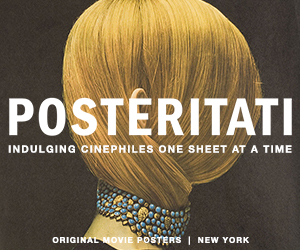The Tribe opens with an extended stationary shot of a bus stop, seen from across the street. A teenager with a suitcase arrives and appears to be asking a woman for directions, but we’re not quite sure. Our view of them is interrupted by intermittently arriving buses; the traffic noise drowns out any other sound; we’re simply too far away. We’re left to try and fill in the blanks – which is essentially what we’ll be doing all film long.
The Tribe, you see, is largely set at a Ukrainian boarding school for deaf students and unfolds entirely in sign language. There are no subtitles or voiceovers to offer the hearing viewer any assistance. The result is a deeply immersive experience, one that made me feel like a sense-deprived stranger in an unfamiliar world (as, perhaps, these kids might feel when they’re not at school). Without any dialogue (or music) to focus on, my ears became highly attuned to other things: the creaking of chairs when someone sits in them; the click of steps down a hallway; the crunch of snow underfoot. Writer-director Myroslav Slaboshpytskiy also structures The Tribe as a series of long, single takes, often involving elaborate tracking shots, which further emphasizes the sense of immediacy. From the way I was made to intensely study the screen for information – both visual and aural – to the way the lack of editing left little room to breathe, the movie delivered an unsettling dose of claustrophobia.
The Tribe also felt claustrophobic because I wanted to flee from much of what I was seeing. For reasons that are never quite explained, this particular boarding school is a front for all sorts of dehumanizing criminal activity, conducted by a gang of violent bullies who seemingly have complete control of the school (adult authority figures are rarely seen). Far beyond shoving the younger and weaker kids around (though they do that too), these older boys spend their nights mugging passing pedestrians and prostituting a pair of female students at a nearby truck stop.
The Tribe seems content to depict its characters as Droogs.
It’s never quite clear why Slaboshpytskiy chose to match his formal approach – the lack of subtitles, the long takes – with this particular narrative. Is some sort of perversely egalitarian point being made? (Deaf kids can be immoral monsters too!) Are the teens’ actions meant to be interpreted as anger over their disabilities and the way society ostracizes them? Possibly, but The Tribe itself never gives much support for that reading, partly because the picture seems to take place within a vacuum. One of the reasons the movie feels claustrophobic is because it barley recognizes the outside world.
It’s also hard to connect with the film because its characters are inscrutable. By eschewing subtitles, The Tribe removes a potential tool of empathy. And nothing is done – formally or narratively – to make up for that. As a result, the characters remain at a distance, even the boy in that opening scene. Named Sergey and played by Grigoriy Fesenko, he at first appears to be an audience surrogate, the new kid. Yet as he becomes more entrenched in the school’s criminal syndicate and his behavior becomes increasingly repellent, Sergey is somehow less and less defined as a character. During a nighttime attack on a random passerby, Sergey echoes the viciousness of Alex in A Clockwork Orange. Indeed, The Tribe seems content to depict its characters as Droogs.
There might be value in that if The Tribe was more coherent as a work of social commentary (like A Clockwork Orange). But the movie seems content to be disturbing and leave it at that. The result is a desensitizing viewing experience – a spiritual, if not aesthetic, dead end.
I couldn’t help but compare The Tribe to the 2014 Spanish film Artico, from director Garbriel Velazquez. Artico also concentrated on a group of antisocial teens, yet it not only placed them within a larger context (referencing the financial meltdown of the late 2000s), but also took care, particularly with its confrontational close-ups, to see them as human beings. For all its impressive formal rigor, that’s something The Tribe can’t match.



